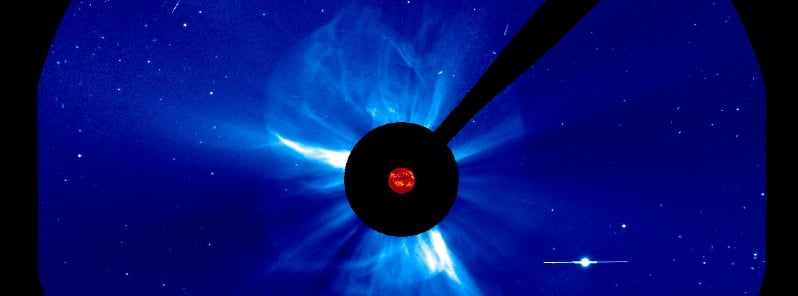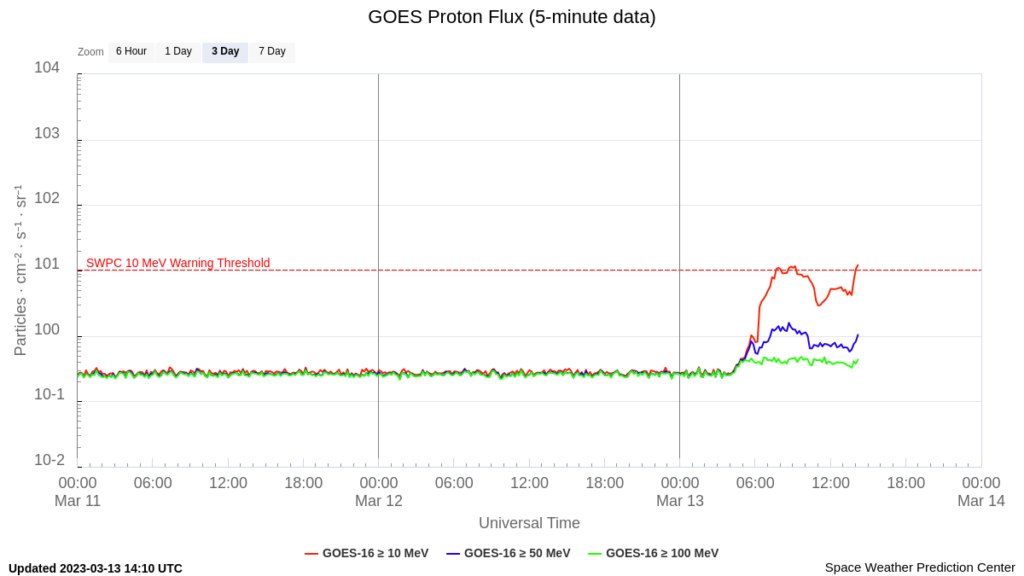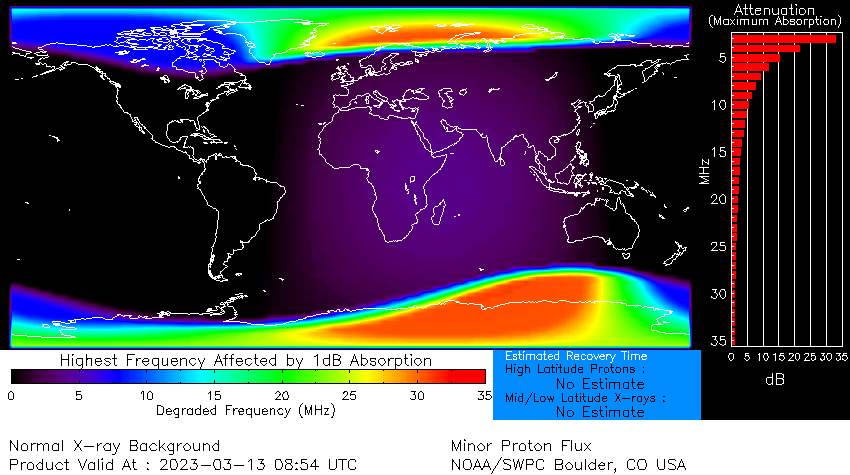S1 – Minor solar radiation storm after full-halo CME associated with solar activity on the far side

A full-halo coronal mass ejection (CME) first visible in LASCO C2 imagery at 03:36 UTC on March 13, 2023, produced S1 – Minor Solar Radiation Storm at 07:50 UTC.
This CME was associated with solar activity on the far side and is not Earth-directed.
The greater than 10 MeV proton flux became enhanced at around 04:30 UTC, shortly following the back-sided halo CME observed at 03:36 UTC. The greater than 10 MeV proton flux reached the S1 – Minor radiation storm threshold at 07:50 UTC with a peak flux of 11 pfu observed at 09:10 UTC.
Potential impacts:
Radio – Minor impacts on polar HF (high frequency) radio propagation resulting in fades at lower frequencies.
Because of its extreme speed (more than 3 000 km/s), this CME may be classified as “extremely rare,” a fast-mover that occurs only once every decade or so, said Dr. Tony Phillips of the SpaceWeather.com.
The greater than 10 MeV proton flux is expected to slowly return to background levels over the remainder of the day and be at background levels on March 14 and 15.


References:
1 Forecast Discussion – Issued: 2023 Mar 13 1230 UTC – Prepared by the U.S. Dept. of Commerce, NOAA, Space Weather Prediction Center
Featured image: Full halo CME, March 13, 2023. Credit: NASA/ESA SOHO LASCO C3, NASA/SDO 304, Helioviewer, The Watchers

Commenting rules and guidelines
We value the thoughts and opinions of our readers and welcome healthy discussions on our website. In order to maintain a respectful and positive community, we ask that all commenters follow these rules.